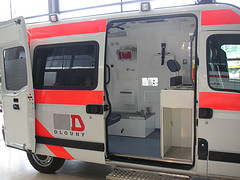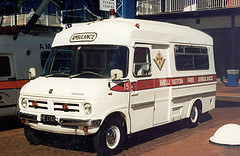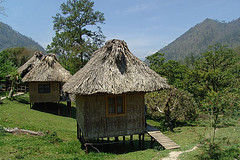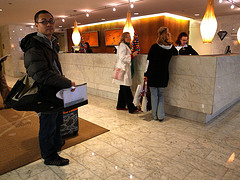 After reading about a traveler who had to cancel their Disney trip because her daughter ran away and then discovered that her Disney travel insurance refused to refund the trip losses, we were curious about Disney travel insurance. We searched around on the Disney Cruise site to determine their travel insurance offering and found this plan customized for Disney Cruise Line Vacations by Access America (now known as Allianz Travel Insurance).
After reading about a traveler who had to cancel their Disney trip because her daughter ran away and then discovered that her Disney travel insurance refused to refund the trip losses, we were curious about Disney travel insurance. We searched around on the Disney Cruise site to determine their travel insurance offering and found this plan customized for Disney Cruise Line Vacations by Access America (now known as Allianz Travel Insurance).
A note: we don’t know which insurance plan the traveler in the article purchased, so this is purely a research and comparison effort.
The Disney Cruise plan comes with an introduction addressed to Disney passengers that answers a number of common questions, and then gets right into the details of the certificate of insurance. The customized Disney insurance plan is very similar to standard travel insurance plans.
The plan comes with a 10-day free review period and 24-hour assistance services.
The schedule of coverage reads like this:
SCHEDULE OF COVERAGE
The following maximum levels of coverage are available:
1. Trip Cancellation/Interruption Protection Up To Trip Cost*
2. Travel Delay $500 per individual
3. Emergency Medical/Dental $10,000 per individual
4. Baggage Coverage $3,000 per individual
5. Baggage Delay $500 per individual
6. Emergency Med. Transportation $30,000 per individual
*Maximum coverage available is $10,000 per individual. Only
expenses booked through Disney Cruise Line will be covered.
The covered reasons for trip cancellation and interruption include:
- serious illness and injury or death of you, a traveling companion, or family member (with restrictions)
- natural disasters resulting in the complete cessation of services for at least 24 hours
- hijacking or quarantine of you or a traveling companion
- being required to serve on a jury or appear in court (keep a copy of your subpoena)
- primary residence made uninhabitable by fire, flood, burglary, vandalism or natural disaster (note the ‘uninhabitable’ restriction)
- traffic accident en route
- military leave is revoked or  you or a traveling companion is reassigned within 10 days of your departure date
- victim of felonious assault within 10 days of your departure
- laid off from an employer you or a traveling companion have worked for at least three continuous years (note the continuous employment with the same employer restriction)
- family or friends with whom you are planning to stay are unable to accommodate you due to a life threatening illness, injury or death
- normal pregnancy as long as the pregnancy occurs after your effective date and can be verified by medical records (note the need for medical records)
As with any travel insurance plan, this Disney plan has relatively standard restrictions and exclusions a traveler must be aware of and follow to make a claim.
It also includes the same general exclusions stated in typical travel insurance plans:
Part VI. GENERAL EXCLUSIONS
These exclusions apply to all plan benefits and services. In
addition to any exclusions that apply to a particular benefit, no
coverage is provided for any loss arising directly or indirectly out
of or as a result of the following:
1. Intentionally self-inflicted harm, suicide or attempted
suicide, by You, a Traveling Companion or a Family
Member;
2. Normal Pregnancy (unless as specifically covered), fertility
treatments, Childbirth or elective abortion, other than
unforeseen complications of pregnancy, of You, a
Traveling Companion or a Family Member;
3. Mental or nervous health disorders, including but not
limited to: anxiety, depression, neurosis or psychosis; or
physical complications related thereto, of You, a Traveling
Companion or a Family Member;
4. Alcohol or substance abuse or use; or conditions or
physical complications related thereto, of You, a Traveling
Companion or a Family Member;
5. War (whether declared or undeclared), acts of war, military
duty (unless as specifically covered), civil disorder or
unrest (except as provided for in Travel Delay); Page 17
6. Participation in professional or amateur sport events
(including training);
7. All extreme, high risk sports including but not limited to:
bodily contact sports; skydiving; hang gliding, bungee
jumping, parachuting; mountain climbing or any other high
altitude activities, caving, heli-skiing, extreme skiing, or any
skiing outside marked trails;
8. Scuba diving (unless accompanied by a dive master and
not deeper than 130 feet);
9. Operating or learning to operate any aircraft as pilot or
crew;
10. Nuclear reaction, radiation or radioactive contamination;
11. Natural disasters (unless as specifically covered);
12. Epidemic;
13. Pollution or threat of pollutant release;
14. Any unlawful acts committed by You, Family Members, or
Traveling Companions, whether they are insured or not;
15. Any expected or reasonably foreseeable events; or
16. Financial Default of a travel supplier.
Where does Disney Travel Insurance fall short?
First, let us be clear that we only reviewed a single Disney travel insurance plan, but the one problem we see with purchasing Disney Cruise Travel Insurance is that there appears to be no add-on options to fill out the coverage. For many Disney travelers, this coverage will work just fine, but for those unique situations you may encounter, such as the traveler we mentioned at the beginning of this post (her daughter ran away before the trip), you could lose a lot of money.
For example, the Disney plan doesn’t appear to provide a ‘cancel for any reason’ option or adventure sports (in case you want to try paragliding on your vacation). Neither does the Disney plan cover losses or expenses resulting from pre-existing medical conditions that occurred during the 60 days prior to the effective date of your insurance. While this is typical for many travel insurance plans, there are options with third-party travel insurance providers if the plan is purchased within a certain number of days of the first trip payment. See a list of providers that deliver coverage for pre-existing medical conditions.
So, is Disney Travel Insurance ‘real’ and is it worth it?
Yes, it appears that (at least with this policy) Disney travel insurance is real travel insurance and for many Disney travelers, the coverage should provide what they need within the restrictions and exclusions of the policy. Â As always, we strongly recommend that all travelers who purchase travel insurance plans use their free look period to read the policy and understand their coverage so they aren’t surprised when their claim is denied.
See these links for additional information:
- Understanding the Free Look Period/Refund Policy
- 4 steps to 100% confidence in your travel insurance plan
- 8 Steps to verify you have the right travel insurance plan







